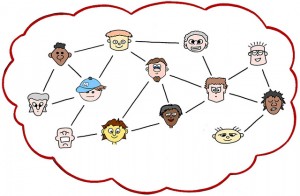What does it take to be a great leader in times of crisis? Can Alan Mulally be the leader we should look at to see if there is a particular characteristic or set of attributes that separates him from most? Can we learn from the story of how he turned around Ford?
![]() I attended the Michigan HR Day on Wednesday April 24 and had the opportunity to hear Bryce G. Hoffman present his new book “American Icon: Alan Mulally and the Fight to Save Ford Motor Company“. I have not finished reading the book yet, but Hoffman included a quote from Mulally in his presentation that made me think about the topic of Leadership and which might be the key attributes a leader needs to have to succeed in turning around a company.
I attended the Michigan HR Day on Wednesday April 24 and had the opportunity to hear Bryce G. Hoffman present his new book “American Icon: Alan Mulally and the Fight to Save Ford Motor Company“. I have not finished reading the book yet, but Hoffman included a quote from Mulally in his presentation that made me think about the topic of Leadership and which might be the key attributes a leader needs to have to succeed in turning around a company.
“You’ve got to trust the process. You need to trust and nurture your emotional resilience,” he said. “Do you have a point of view about the future? Check. Is it still the right vision today? Check. Do you have a comprehensive plan to deliver that? Check. If you get skilled and motivated people working together through this process, you’re going to figure it out. But you’ve got to trust it.” The leader’s job is to remind people of that vision, make sure they stick to the process, and keep them working together. “Working together always works. It always works,” Mulally stressed. “Everybody has to be on the team. They have to be interdependent with each other.”
The bold type is mine and it is to stress the importance of interdependence and really “being” a team.
Alan Mulally became CEO of Ford in 2006, when “it was about to post a loss of nearly $6 billion for the third quarter alone – the company’s worst quarterly result in more than fourteen years”. What a challenge! And not only was he able to do it but, “In less than three years, (…) Ford would wow Wall Street with quarter after quarter of profits at a time when most companies were still reeling from the worst economic crisis since the Great Depression.”
What I like about the quote is the emphasis in the need for interdependence. You cannot succeed if you work in silos or if each person has their own agenda. It just doesn’t work unless you are able to develop an environment in which every single employee understands what is going on, where we are headed, and what we need to do to get there. Just as Mulally says in his quote, you need a team of people with the right skills working together towards a common goal.
From what I have read so far, American Icon provides multiple examples of great and not so good leadership. Power struggles, individual agendas, etc. are present in the book as well. I believe that one way of learning to identify what we need to look for when hiring for leadership positions or assessing our leaders’ development needs is to read case studies like this one, where we will be able to see if we can apply the learnings to our own organizations. We need to remember though the uniqueness of our own organizations and that what works in one might be the worst option for another.
American Icon is fascinating. It’s one of those books that you can just not stop reading.


